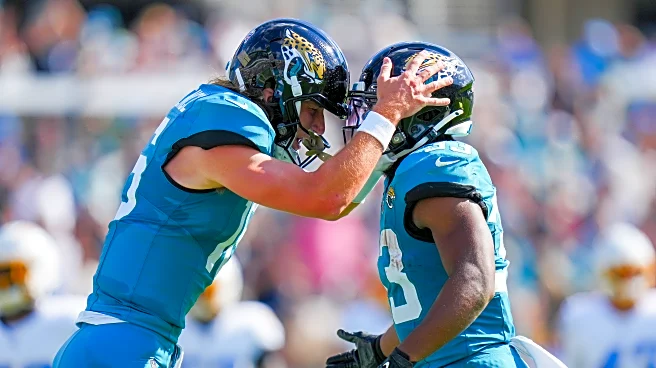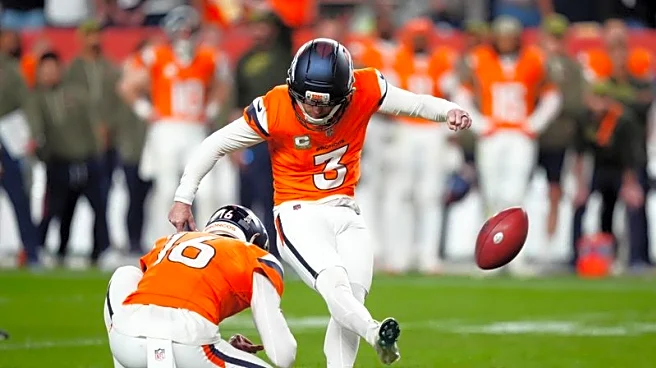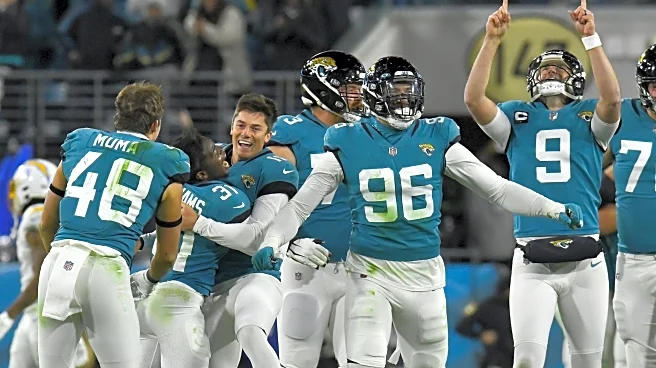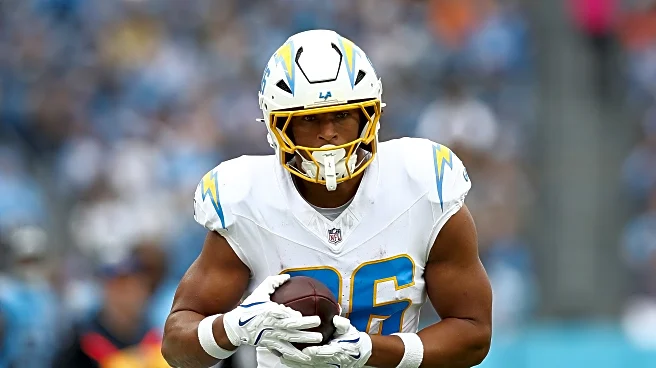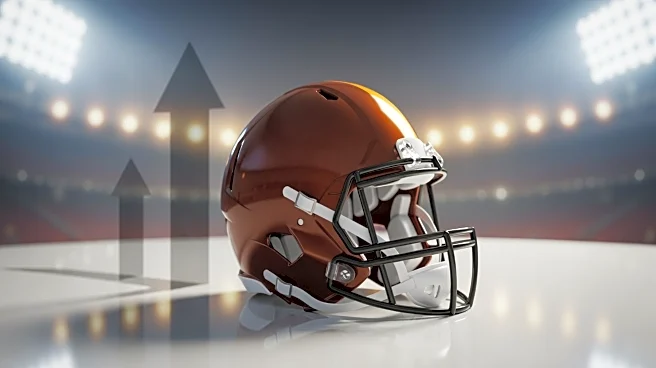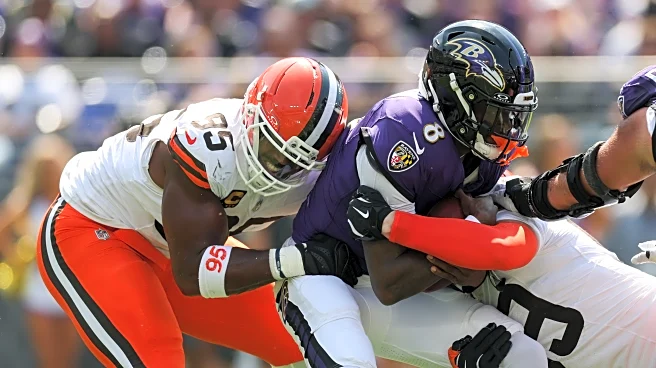What's Happening?
The Jacksonville Jaguars have announced plans to continue utilizing Travis Hunter as a two-way player during the 2026 season, despite his recent knee surgery. Hunter, who was selected as the No. 2 overall
pick after the Jaguars traded multiple draft picks, including a 2026 first-rounder, has been a standout performer on both offense and defense. During a Week 7 game in London against the Rams, Hunter excelled by covering star receiver Davante Adams and achieving career highs in receptions and receiving yards, along with scoring his first career touchdown. However, Hunter's season was cut short due to a non-contact knee injury sustained during practice, leading to surgery for an isolated LCL tear. Despite the setback, the Jaguars plan to continue deploying Hunter as their top wide receiver and matchup cornerback, with expectations for increased usage once he recovers.
Why It's Important?
Travis Hunter's dual role as both a wide receiver and cornerback is significant for the Jaguars, offering strategic flexibility and enhancing team dynamics. His ability to perform at a high level on both sides of the ball makes him a valuable asset, potentially influencing game outcomes and team strategy. The decision to maintain Hunter's two-way role underscores the Jaguars' commitment to maximizing his unique skill set, which could lead to improved team performance and competitiveness in the league. Hunter's recovery and return to form are crucial for the Jaguars, as his presence on the field could impact their chances in upcoming seasons, particularly given the investment made in acquiring him.
What's Next?
Travis Hunter will undergo rehabilitation in Jacksonville, staying close to the team's medical staff, including Dr. Kevin Kaplan, who performed the surgery. The Jaguars will evaluate Hunter's performance and areas for improvement at the end of the season, with plans to ramp up his usage once he is fully recovered. The team will focus on their immediate games, including their upcoming match against the Chargers, while keeping an eye on Hunter's progress. His recovery timeline is estimated at six months, and the team is optimistic about his return, drawing parallels to similar injuries in other players who have successfully returned to form.
Beyond the Headlines
Hunter's injury and subsequent recovery highlight the physical demands and risks associated with playing dual roles in professional football. The Jaguars' decision to continue utilizing him as a two-way player reflects broader trends in the NFL, where versatility and adaptability are increasingly valued. This approach may influence other teams to consider similar strategies, potentially reshaping player roles and team compositions. Additionally, Hunter's situation underscores the importance of effective injury management and rehabilitation in professional sports, with implications for player health and career longevity.


